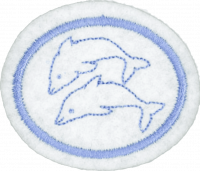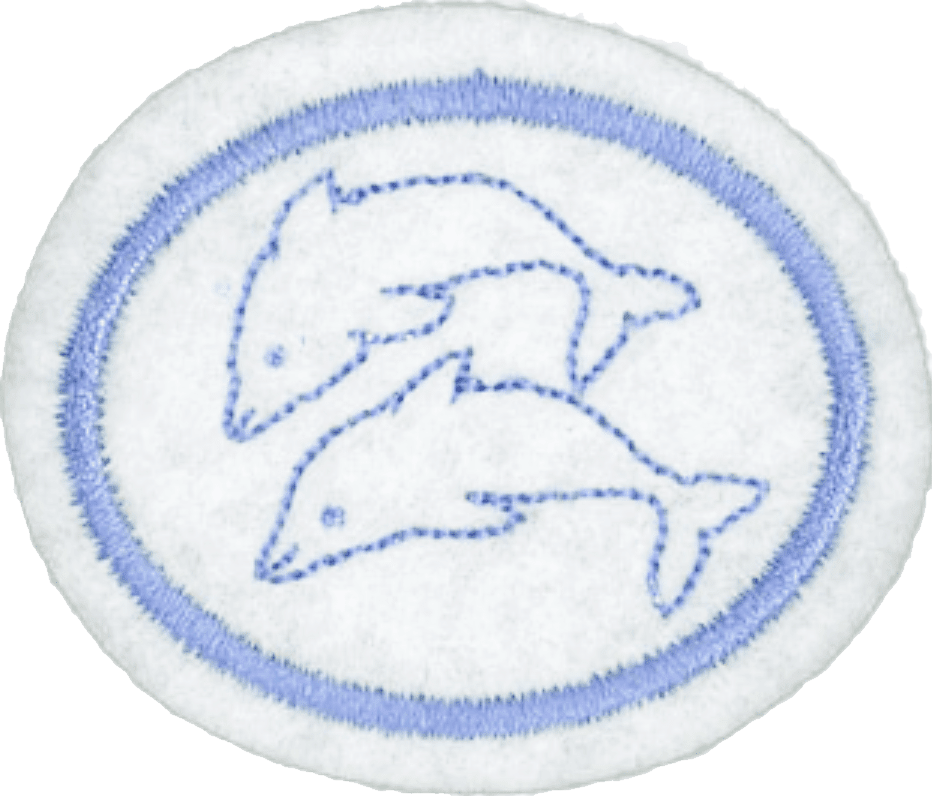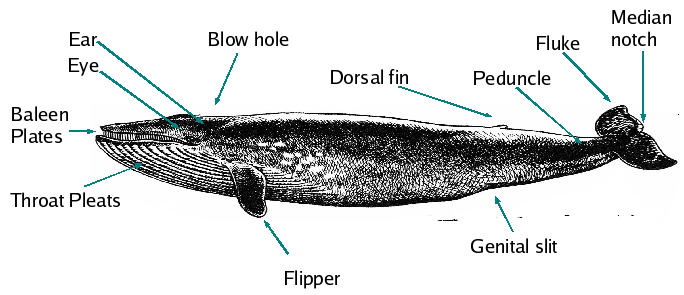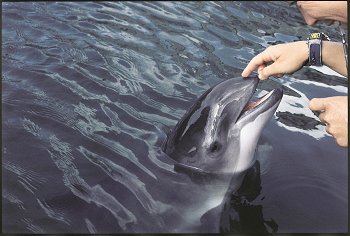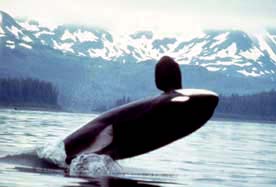Difference between revisions of "AY Honors/Cetaceans/Answer Key/es"
(Created page with "</noinclude> <!-- 1. ¿De qué manera la familia de los cetáceos es distinto a la mayoría de los demás seres vivos marinos? -->") |
(Created page with "<noinclude>") |
||
| Line 44: | Line 44: | ||
<!-- 3. ¿De qué manera las ballenas y los delfines han sido un beneficio para el hombre? --> | <!-- 3. ¿De qué manera las ballenas y los delfines han sido un beneficio para el hombre? --> | ||
| − | + | {{clear}} | |
| − | |||
| − | |||
| − | + | <noinclude></noinclude> | |
| − | <noinclude | ||
| − | |||
{{CloseReq}} <!-- 3 --> | {{CloseReq}} <!-- 3 --> | ||
{{ansreq|page={{#titleparts:{{PAGENAME}}|2|1}}|num=4}} | {{ansreq|page={{#titleparts:{{PAGENAME}}|2|1}}|num=4}} | ||
| − | <noinclude> | + | <noinclude></noinclude> |
| − | </noinclude> | + | <!-- 4. Explicar cómo es que una ballena que se reproduce en las aguas cálidas de los trópicos puede también sobre vivir al agua helada de la Antártida, donde se van a alimentar (considerando que la ballena es un mamífero de sangre caliente como los humanos). --> |
| − | <!-- 4. | ||
| − | |||
| − | |||
| − | + | <noinclude></noinclude> | |
| − | <noinclude | ||
| − | |||
{{CloseReq}} <!-- 4 --> | {{CloseReq}} <!-- 4 --> | ||
{{ansreq|page={{#titleparts:{{PAGENAME}}|2|1}}|num=5}} | {{ansreq|page={{#titleparts:{{PAGENAME}}|2|1}}|num=5}} | ||
| Line 149: | Line 140: | ||
</div> | </div> | ||
| − | + | <noinclude></noinclude> | |
| − | <noinclude | ||
| − | |||
{{CloseReq}} <!-- 6 --> | {{CloseReq}} <!-- 6 --> | ||
{{ansreq|page={{#titleparts:{{PAGENAME}}|2|1}}|num=7}} | {{ansreq|page={{#titleparts:{{PAGENAME}}|2|1}}|num=7}} | ||
| Line 160: | Line 149: | ||
</div> | </div> | ||
| − | + | <noinclude></noinclude> | |
| − | <noinclude | ||
| − | |||
{{ansreq|page={{#titleparts:{{PAGENAME}}|2|1}}|num=7a}} | {{ansreq|page={{#titleparts:{{PAGENAME}}|2|1}}|num=7a}} | ||
<noinclude><div lang="en" dir="ltr" class="mw-content-ltr"> | <noinclude><div lang="en" dir="ltr" class="mw-content-ltr"> | ||
| Line 239: | Line 226: | ||
</div> | </div> | ||
| − | + | <noinclude></noinclude> | |
| − | <noinclude | ||
| − | |||
{{CloseReq}} <!-- 7k --> | {{CloseReq}} <!-- 7k --> | ||
{{CloseReq}} <!-- 7 --> | {{CloseReq}} <!-- 7 --> | ||
| Line 258: | Line 243: | ||
</div> | </div> | ||
| − | + | <noinclude></noinclude> | |
| − | <noinclude | ||
| − | |||
{{CloseReq}} <!-- 8 --> | {{CloseReq}} <!-- 8 --> | ||
<noinclude><div lang="en" dir="ltr" class="mw-content-ltr"> | <noinclude><div lang="en" dir="ltr" class="mw-content-ltr"> | ||
| Line 288: | Line 271: | ||
</div> | </div> | ||
| − | + | {{:Adventist_Youth_Honors_Answer_Book/Species_Account/Delphinapterus_leucas/es}} | |
| − | {{:Adventist_Youth_Honors_Answer_Book/Species_Account/Delphinapterus_leucas}} | + | {{:Adventist_Youth_Honors_Answer_Book/Species_Account/Monodon monoceros/es}} |
| − | {{:Adventist_Youth_Honors_Answer_Book/Species_Account/Monodon monoceros}} | ||
| − | |||
<div lang="en" dir="ltr" class="mw-content-ltr"> | <div lang="en" dir="ltr" class="mw-content-ltr"> | ||
Revision as of 17:16, 6 April 2021
1
2
3
4
5
5a
Quizlet flashcards (4 cards): Link
So God created the great creatures of the sea and every living and moving thing with which the water teems, according to their kinds, and every winged bird according to its kind. And God saw that it was good.
5b
- Son of man, take up a lament concerning Pharaoh king of Egypt and say to him:
- " 'You are like a lion among the nations;
- you are like a monster in the seas
- thrashing about in your streams,
- churning the water with your feet
- and muddying the streams.
5c
- Am I the sea, or the monster of the deep,
- that you put me under guard?
5d
- For as Jonah was three days and three nights in the belly of a huge fish, so the Son of Man will be three days and three nights in the heart of the earth.
6
Go beyond just the part about Jonah and the Whale everyone knows. There is a whole (short) Bible book on Jonah.
If you are teaching this honor to your unit, you can have them retell the story (and act it out) for worship at a campout or at a regular meeting. You can also have your Pathfinders tell the story during regular church service if your church has a time allotted for "Children's Story". Alternately, you can have them write it out and read it back to you (or to the group).
7
7a
These are the "strainers" in a baleen whale's mouth.
7b
A cetacean breaths through this little hole in the top of its head.
7c
The fin on the top of many cetaceans.
7d
These are hard to see because they're so small, but cetaceans all have them on the sides of their heads.
7e
The better to see you with!
7f
These are the folds in a baleen whale's throat and allow the whale's throat to expand when it fills its mouth with water to filter its food through its baleen.
7g
The tail.
7h
The fins on the side.
7i
The reproductive organ of a female cetacean.
7j
The notch in the middle of the trailing edge of the fluke.
7k
The part of the body to which the fluke is attached.
8
The order Cetacea includes whales, dolphins, and porpoises. There are around 90 living species, divided into the suborders Mysticeti (the baleen whales covering about 17 species) and Odontoceti (the toothed whales, including porpoises and dolphins covering about 73 species). All Cetacea live in ocean water except for the river dolphins. We present at least one sample from each family of Cetacea here to help you learn to identify them. For more details including range maps and comparative sizes visit https://en.wikipedia.org/wiki/List_of_cetaceans or the wikipedia article linked from the scientific name.
Quizlet Flashcards (40+ options): Link
Baleen whales
- Family Balaenidae: right whales
Adventist Youth Honors Answer Book/Species Account/Balaenoptera musculus
- Family Balaenopteridae: rorquals
Adventist Youth Honors Answer Book/Species Account/Megaptera novaeangliae
- Family Eschrichtiidae: gray whale - The only species in its family.
Adventist Youth Honors Answer Book/Species Account/Eschrichtius robustus
- Family Neobalaenidae: pygmy right whale - only one species in its family.
Adventist Youth Honors Answer Book/Species Account/Caperea marginata
Toothed whales
Toothed whales include both true whales, porposes, and ocean and river dwelling dolphins. The Toothed Whales make up about 73 out of the 90 known living species of Cetaceans. As the name implies, these species have teeth to hunt prey with.
Family Monodontidae: Narwhal and Beluga
These two related species live in cold Arctic waters.
Adventist Youth Honors Answer Book/Species Account/Delphinapterus leucas/es Adventist Youth Honors Answer Book/Species Account/Monodon monoceros/es
Family Physeteridae: Sperm Whales
There are three species in the sperm whale family, including the largest toothed predator in the world and smallest whale in the world. A common characteristic of these species is the spermaceti, a semi-liquid waxy white substance filling the 'case' or spermaceti organ in the whale's head, which is thought to be involved in providing ballast for diving and maintaining buoyancy. This may be done by flushing cold water through the nose, hardening the spermaceti, to dive, and pumping warm blood to melt the spermaceti to surface. All three species dive to great depths to find food, although the sperm whale is believed to dive much deeper than either of its smaller cousins. Sperm whales eat squid, fish, and even sharks. Adventist Youth Honors Answer Book/Species Account/Physeter macrocephalus Adventist Youth Honors Answer Book/Species Account/Kogia breviceps
Family Ziphiidae: Beaked Whales
There are 22 recognized species of Beaked Whales, toothed whales notable for their elongated beaks. Of air breathing animals, beaked whales are some of the most extreme divers. Cuvier's beaked whales regularly dive for an hour at a depth over 1,000 m (3,300 ft), and the longest and deepest foraging dive recorded is 137.5 minutes and 2,992 m (9,816 ft).
Beaked whales are one of the least known groups of mammals because of their deep-sea habitat, mysterious habits, and apparent low abundance. Only three to four of the 22 species are reasonably well-known. Baird’s and Cuvier's beaked whales were subject to commercial exploitation, off the coast of Japan, while the Northern bottlenose whale was extensively hunted in the northern part of the North Atlantic late in the 19th and early in the 20th centuries.
Adventist Youth Honors Answer Book/Species Account/Berardius Adventist Youth Honors Answer Book/Species Account/Hyperoodon Adventist Youth Honors Answer Book/Species Account/Ziphius cavirostris
Family Phocoenidae: Porpoises
Porpoises are small cetaceans that are distinct from dolphins, although the word "porpoise" has been used to refer to any small dolphin, especially by sailors and fishermen. The most obvious visible difference between the two groups is porpoises have spatulate (flattened) teeth distinct from the conical teeth of dolphins. Porpoises rear more young more quickly than dolphins. They have small flippers, notched tail flukes, and no beaks. All carry at least 11 pairs of small teeth in their upper and lower jaws.
Porpoises, divided into six species, live in all oceans, mostly near the shore.
Finless Porpoise (Neophocaena phocaenoides)
Dónde se encuentra: The Finless Porpoise lives in the coastal waters of Asia, especially around India, China, Indonesia and Japan. A unique fresh water population is found in the Yangtze River. At the western end, their range includes the length of the western coast of India and continues up into the Persian Gulf. Throughout their range, the porpoises stay in shallow waters (up to 50m), close to the shore, in waters with soft or sandy seabeds. In exceptional cases they have been encountered as far as 100 miles off-shore in the East China and Yellow Seas, albeit still in shallow water.
Descripción: The Finless Porpoise almost completely lacks a dorsal fin. Instead there is a low ridge covered in thick denticulated skin. Adult Finless porpoises are a uniform light grey color. Infants are mostly black with grey around the dorsal ridge area, becoming grey after 4-6 months.
Harbour Porpoise (Phocoena phocaena)
Dónde se encuentra: The Harbour Porpoise, as its name implies, stays close to coastal areas or river estuaries and as such is the most familiar porpoise to whale watchers. This porpoise often ventures up rivers and has been seen hundreds of miles from the sea.
Descripción: The Harbour Porpoise is a little smaller than the other porpoises. It is about 75 cm long at birth. Males grow up to 1.6 m and females to 1.7 m. The females are correspondingly heavier, with a maximum weight of around 76 kg compared with the males' 61 kg. The body is robust and the animal is at its maximum girth just in front of its triangular dorsal fin. The beak is poorly demarcated. The flippers, dorsal fin, tail fin and back are a dark grey. The sides are a slightly speckled lighter grey. The underside is much whiter, though there are usually grey stripes running along the throat from the underside of the mouth to the flippers.
Family Delphinidae: Oceanic Dolphins
Dolphins, including the river dolphins, comprise 45 species out of the 90 Cetacean species. Six species in the family Delphinidae are commonly called "whales", but genetically are dolphins. They are sometimes called blackfish. These are the Melon-headed whale, (Peponocephala electra) Killer whale/Orca (Orcinus orca). Pygmy killer whale, (Feresa attenuata), False killer whale, (Pseudorca crassidens), Long-finned pilot whale, (Globicephala melas) and the Short-finned pilot whale (Globicephala macrorhynchus)
Orca, or killer whale (Orcinus orca)
Dónde se encuentra: The orca is found in all the world's oceans, from the frigid Arctic and Antarctic regions to warm, tropical seas.
Descripción: The Orca or Killer Whale is the largest species of the oceanic dolphin family (Delphinidae). Orcas are versatile predators, with some populations feeding mostly on fish and others on other marine mammals, including large whales. Wild orcas are usually not considered a threat to humans.
Bottlenose dolphin (Tursiops truncatus)
Dónde se encuentra: The Bottlenose dolphin inhabits warm and temperate seas worldwide and may be found in all but the Arctic and the Antarctic Oceans.
Descripción: The Bottlenose Dolphin is the most common and well-known dolphin species. They are gray, varying from dark gray at the top near the dorsal fin to very light gray and almost white at the underside. This makes them harder to see both from above and below when swimming. The elongated upper and lower jaws form what is called the rostrum and give the animals their name of Bottlenose. The real nose however is the blowhole on top of the head, and the nasal septum is visible when the blowhole is open. Their face shows a characteristic "smile".
Common dolphin (Delphinus delphis)
Dónde se encuentra: The common dolphin is widely distributed in temperate, sub-tropical and tropical waters throughout the world in a band roughly spanning 40 degrees south to 50 degrees north. The species typically prefer enclosed bodies of water such as the Red and Mediterranean Seas. Deep off-shore waters and to a lesser extent over continental shelves are preferred to shallow waters. Some populations may be present all year round, others appear to move in a migratory pattern. Preferred surface water temperature is 10-28 degrees Celsius.
Descripción: Common dolphins travel in groups of around 10-50 in number and frequently gather into schools numbering 100 to 2000 individuals. These schools are generally very active - groups often surface, jump and splash together. Typical behavior includes breaching, tail-slapping, chin-slapping, bow-riding and porpoising.
Superfamily Platanistoidea: River Dolphins (fresh water dwelling)
River Dolphins are part of the toothed whale group but are uniquely adapted to living in fresh water.
- Family Iniidae: river dolphins
Adventist Youth Honors Answer Book/Species Account/Inia geoffrensis
- Family Lipotidae: baiji
Adventist Youth Honors Answers Book/Species Account/Lipotes vexillifer
- Family Platanistidae: South Asian river dolphin
Adventist Youth Honors Answers Book/Species Account/Platanista gangetica
- Family Pontoporiidae: La Plata river dolphin
Adventist Youth Honors Answers Book/Species Account/Pontoporia blainvillei
Notes
This honor has significant overlap with Marine Mammals. Why not teach or earn them both at the same time?
References
Wikipedia articles
Other references
